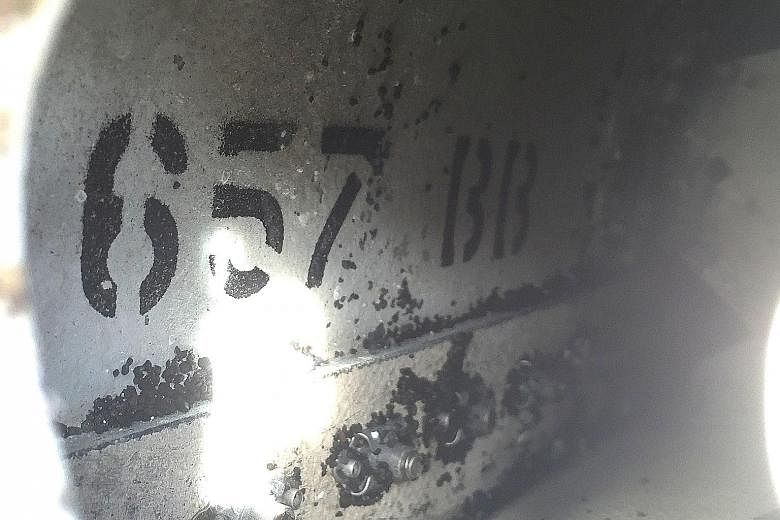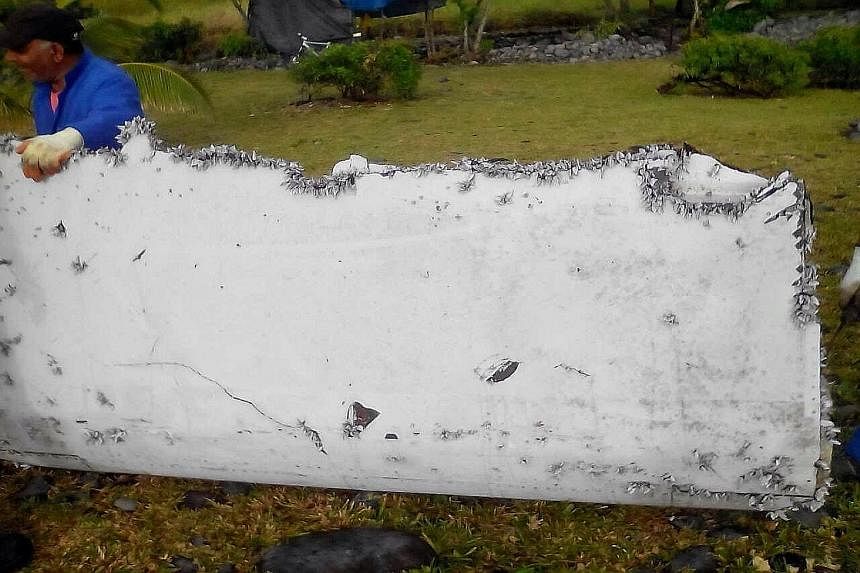It is a small part of the plane but confirmation that a 2m-long flaperon, which surfaced last week, belongs to Malaysia Airlines Flight MH370 is a significant development, said experts.
The discovery of a part of the wing of the Boeing 777, which washed up on Reunion Island, confirms the widely accepted scenario that the flight, which vanished on March 8 last year en route from Kuala Lumpur to Beijing with 239 people on board, had plunged into the Indian Ocean.
Following tests in France, Malaysian Prime Minister Najib Razak confirmed early yesterday that the flaperon came from the missing aircraft.
The "critical" find will shed some light on the tragedy, said Mr Michael Daniel, a retired US Federal Aviation Administration (FAA) official.
"Further tests and investigations over the next few weeks should be able to determine the circumstances under which the piece became detached from the aircraft. For example, was it at high impact? What was the force involved?" he said.
The answers could provide some important clues on the final moments of MH370.
Ecologists will also analyse barnacles or marine crustaceans attached to the flaperon's surface to determine the chemical and other conditions of the water through which they travelled, in order to locate their origin.
The information would hopefully narrow the search zone for the main wreckage and black boxes which must be found if investigators are to determine what happened to MH370, including whether or not the plane flew undetected for about seven hours before finally crashing.
"The big question is whether the find will lead investigators to the main wreckage... and the fact is, there is no guarantee it will," said Mr Jacques Astre, president of industry consultancy International Aviation Safety Solutions and a former FAA official. Even if more debris washes up on the shores, some will go undetected and "some of it will be considered as garbage and thrown away... Evidence may be lost as a result", he noted.
Retired US airline pilot John Cox, who runs his own consultancy, said: "This is not the key to solving the events of MH370. It is a piece of information.
"No one can predict when this mystery will be solved, though I remain convinced it will be solved."
Still, the flaperon find is likely to give search teams that have been combing the rough seas for months without finding anything renewed hope and zeal.
Australia, which is leading the search, has said, in the wake of the discovery, that it is confident the hunt is in the right place. The chief commissioner of the Australian Transport Safety Bureau, Mr Martin Dolan, told ABC radio: "The find is consistent with all the work we've done, so we're confident that we're looking in the right area and we'll find the aircraft there."
Satellite and other data point to the plane coming down in the southern Indian Ocean and ships have been scouring more than 50,000 sq km of deep ocean floor for evidence, he said.
Drift modelling data has shown debris could have been carried by wind and currents to Reunion Island, about 4,000km from the region where MH370 is believed to have gone down.
In an interview with The Straits Times last month, Mr Raymond Benjamin, secretary-general of the International Civil Aviation Organisation (ICAO), stressed that MH370 must be found.
"We don't know what exactly happened in the cockpit so we don't know if it was a security issue or a safety issue. We have never had a situation where an aircraft flew for seven hours before crashing," he said then.
More than 17 months after MH370 disappeared, the discovery of the flaperon is an important first step towards solving one of the greatest mysteries of modern commercial aviation and giving some closure to grieving relatives.



